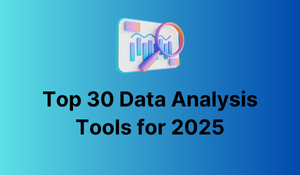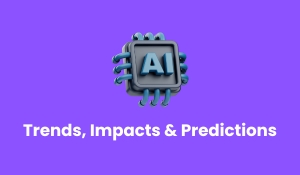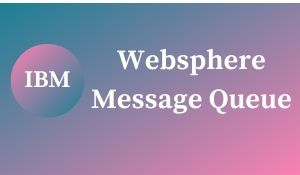
Adobe Analytics is one of the leading digital analytics tools, and businesses need to optimize their online performance. Therefore, preparation for an Adobe Analytics interview requires knowledge of its features, implementation, and reporting capabilities. Here GoLogica can provide key questions and answers to help candidates excel in their interviews.
1. What is Adobe Analytics, and what is its primary purpose?
Adobe Analytics, an Adobe product, is a powerful platform designed for web and mobile analytics. Its core objective is to monitor, analyze, and offer valuable insights into user interactions on digital assets, facilitating data-driven marketing strategies and optimization efforts.
2. Explain the difference between dimensions and metrics in Adobe Analytics.
Dimensions in Adobe Analytics are attributes or labels that provide context to data, like page names or traffic sources. Metrics are numerical values quantifying user actions, such as page views or conversion rates.
3. How does Adobe Analytics track user data on websites and apps?
Adobe Analytics tracks user data by deploying JavaScript code on webpages or through SDKs in mobile apps. It captures user interactions, like page views and clicks, sending this data to Adobe’s servers for analysis.
4. What are conversion events in Adobe Analytics, and why are they important?
Conversion events in Adobe Analytics are specific actions or goals users take on a website or app, such as making a purchase. They are crucial as they measure success and help optimize user journeys.
5. What is the significance of tracking “page views” in Adobe Analytics?
Tracking “page views” in Adobe Analytics is vital as it measures how often users view specific pages. It provides insights into content popularity, and user engagement, and helps optimize website structure and content strategy.
6. Can you name some other Adobe marketing solutions that integrate with Adobe Analytics?
Adobe marketing solutions that integrate with Adobe Analytics include Adobe Target for personalization, Adobe Campaign for marketing automation, and Adobe Audience Manager for audience segmentation and targeting.
7. Describe the importance of segmentation in Adobe Analytics. How do you create a segment?
Segmentation in Adobe Analytics allows data analysis based on user-defined criteria, revealing user behavior patterns. To create a segment, users specify rules using dimensions, metrics, and logical operators in the interface.
8. What are “props” and “eVars” in Adobe Analytics, and when would you use them?
In Adobe Analytics, “props” (traffic variables) and “eVars” (conversion variables) capture data attributes. Use props for temporary traffic data and eVars for persistent conversion data, aiding in analysis and reporting.
9. Explain the concept of “fallout” in Adobe Analytics and how it can be beneficial.
Fallout in Adobe Analytics tracks user drop-offs between defined steps in a user journey or funnel. It’s beneficial for identifying where users abandon the process, allowing optimization of conversion paths.
10. How do you set up a funnel analysis in Adobe Analytics, and what insights can you gain from it?
To set up a funnel analysis in Adobe Analytics, define sequential user journey steps. Insights gained include drop-off points, conversion rates, and opportunities for improving the user experience and optimizing conversion paths.

11. What is pathing analysis in Adobe Analytics, and how can it help in optimizing user journeys?
Pathing analysis in Adobe Analytics examines the sequences of pages or events users interact with, revealing common user journeys. It helps optimize user experiences by identifying preferred paths and areas needing improvement.
12. Discuss the concept of attribution models in Adobe Analytics. What are the common attribution models?
Attribution models in Adobe Analytics determine how credit for conversions is assigned to marketing touchpoints. Common models include “first touch,” “last touch,” “linear,” “time decay,” and “custom” models, each offering different insights into user behavior.
13. How does data processing work in Adobe Analytics, and what role do data processing rules play?
Data processing in Adobe Analytics involves collecting and organizing data from user interactions. Data processing rules allow customization, like filtering, enriching, or transforming data, ensuring it’s accurate and relevant for analysis.
14. Can you explain the concept of “calculated metrics” in Adobe Analytics? Provide an example.
In Adobe Analytics, calculated metrics are custom metrics generated by applying mathematical expressions to existing metrics or dimensions. For instance, you can calculate the Average Revenue Per User (ARPU) by dividing the “Total Revenue” metric by the “Total Unique Visitors” dimension. These calculated metrics provide deeper insights.
15. What is the purpose of “success events” in Adobe Analytics, and how do you set them up?
“Success events” in Adobe Analytics track specific user interactions or goals, such as form submissions or video views. To set them up, you define event parameters and use Adobe’s tracking code or SDKs to send data when the event occurs, allowing for performance analysis and optimization.
16. How can you integrate offline data with Adobe Analytics for a more comprehensive view of user behavior?
Integrating offline data with Adobe Analytics involves utilizing Data Sources or Data Feeds. Data from CRM systems, call centers, or in-store purchases can be imported to Adobe Analytics, providing a holistic understanding of user behavior across both online and offline channels for better insights and decision-making.
17. Describe the role of “data sources” in Adobe Analytics and when you might need to use them.
“Data sources” in Adobe Analytics allow importing external data, enhancing analysis with context. They’re used when you need to combine data from different systems like CRM, email campaigns, or offline sales to gain a more comprehensive understanding of user behavior and performance.
18. How do you implement Adobe Analytics tracking on a single-page application (SPA)?
For tracking Adobe Analytics on a single-page application (SPA), use the Adobe Launch platform. Configure Adobe Analytics extensions to send data when SPA routes change or user interactions occur, ensuring accurate tracking of user behavior within the SPA.
Related Courses:
| Course Name | Enroll Now |
|---|---|
| Adobe Analytics Training | Enroll Now |
| Adobe Dynamic Tag Management Training | Enroll Now |
| Adobe Livecycle Es4 Training | Enroll Now |
| Adobe Fireworks Training | Enroll Now |
| Adobe Marketing Cloud Training | Enroll Now |
19. Explain the difference between “first touch” and “last touch” attribution models in Adobe Analytics.
“First touch” attribution gives credit for conversions to the first user interaction, like clicking an ad. “Last touch” attribution assigns credit to the last interaction before conversion, such as a purchase. These models offer distinct perspectives on the customer journey.
20. What is the Adobe Analytics JavaScript library, and how do you deploy it on a website?
The Adobe Analytics JavaScript library is a tracking code provided by Adobe for website analytics. To deploy it, you insert the code snippet into the HTML of your website’s pages, typically in the <head> section, to collect and send user data to Adobe Analytics servers.
21. Can you discuss the role of JavaScript variables (props and eVars) in tracking user data?
JavaScript variables, like props and eVars, capture and send data to Adobe Analytics. Props (traffic variables) are used for short-term tracking, while eVars (conversion variables) persist across visits, enabling in-depth analysis and reporting of user behavior and conversion events.
22. Explain how you would use the Adobe Debugger Chrome extension for troubleshooting Adobe Analytics implementations.
To troubleshoot Adobe Analytics implementations with the Adobe Debugger Chrome extension, open a webpage, enable the extension, and inspect network requests. It displays Adobe Analytics tracking calls, allowing you to verify data accuracy, variable values, and any errors for debugging and validation.
23. What is the purpose of using the Data Insertion API in Adobe Analytics, and when would you use it?
The Data Insertion API in Adobe Analytics allows programmatically sending data to Adobe’s servers. It’s used when automating data uploads from external sources like CRM systems, ensuring seamless integration of offline or third-party data for comprehensive analysis and reporting.
24. How can you prevent data sampling in Adobe Analytics when dealing with large data sets?
To prevent data sampling in Adobe Analytics with large data sets, consider reducing the date range, segmenting data, or using report suites with higher processing limits. Adobe offers Data Warehouse and Data Feeds options for unsampled data access as well.
25. What is the purpose of “data feeds” in Adobe Analytics, and how do they work?
“Data feeds” in Adobe Analytics provide raw data exports for deeper analysis. They work by regularly exporting data into flat files (e.g., CSV), including dimensions, metrics, and events, which can be imported into external tools or databases for extensive analysis, modeling, or integration with other data sources.
26. Discuss the process of setting up cross-device tracking in Adobe Analytics.
Setting up cross-device tracking in Adobe Analytics involves configuring a unique visitor ID (Customer ID or Experience Cloud ID) that persists across devices. Utilize Adobe’s visitor stitching capabilities or ID service to link user data as they interact with your digital properties, allowing a unified view of user behavior.
27. How do you create custom reports in Adobe Analytics, and what options are available for customization?
In Adobe Analytics, you can create custom reports by using the Adobe Workspace interface. Options for customization include selecting dimensions and metrics, applying segments, defining date ranges, and arranging report elements like tables, charts, and visualizations to suit your specific analytical needs.
28. What is the Adobe Analytics workspace, and how can it assist in data analysis?
The Adobe Analytics workspace is a robust analytics platform for data analysis and reporting. It assists by offering a user-friendly interface to visualize, filter, and segment data, facilitating in-depth analysis, uncovering insights, and making data-driven decisions for optimization and marketing strategies.
29. How can you use Adobe Analytics to analyze the effectiveness of a marketing campaign?
To analyze a marketing campaign’s effectiveness in Adobe Analytics, you can track campaign-related metrics, set up conversion goals, and create custom segments to isolate campaign traffic. Use reports and visualizations to measure traffic, conversions, bounce rates, and other key performance indicators, helping refine and optimize future campaigns.
30. Explain the concept of “segment overlap” in Adobe Analytics and its implications for analysis.
Segment overlap in Adobe Analytics refers to the intersection of multiple segments in data analysis. It helps understand shared characteristics among segments and the potential for refining targeting, improving content personalization, and optimizing user experiences to cater to overlapping user groups more effectively.

31. What are “flow” reports in Adobe Analytics, and how can they be useful for user journey analysis?
“Flow” reports in Adobe Analytics visually represent user navigation paths through your website or app. They provide insights into common user journeys, highlighting drop-off points and preferred routes. Flow reports are valuable for identifying bottlenecks, optimizing user journeys, and enhancing the overall user experience.
32. How do you approach A/B testing and optimization using Adobe Analytics data?
- Define Goals: Clearly state what you want to optimize.
- Segmentation: Create segments for A/B test groups.
- Hypothesize: Formulate test hypotheses based on data insights.
- Experiment Setup: Implement A/B tests using Adobe Target or a testing tool.
- Analyze: Use Adobe Analytics data to compare test results.
- Iterate: Make data-driven optimization decisions based on test outcomes for continuous improvement.
33. Can you describe the process of setting up custom alerts for specific metrics or events in Adobe Analytics?
Setting up custom alerts in Adobe Analytics involves the following steps:
- Access Alerts: In Adobe Analytics, go to the “Alerts” section.
- Create Alert: Click “Create Alert” and select the metric or event to monitor.
- Set Thresholds: Define thresholds for when to trigger the alert.
- Notification: Choose how you want to be notified (e.g., email).
- Save Alert: Save the alert to activate it.
- Monitor: Adobe Analytics will automatically monitor the specified data and trigger alerts when conditions are met.
34. What are some common challenges you may encounter when implementing Adobe Analytics, and how would you address them?
Common challenges in Adobe Analytics implementation include:
- Data Consistency: Verify tracking across pages.
- Data Sampling: Address large datasets with Data Warehouse or Data Feeds.
- Cross-Domain Tracking: Configure correctly for seamless tracking.
- Custom Variables: Ensure accurate setup and naming conventions.
- User Authentication: Manage user authentication issues.
Address these challenges with thorough testing, documentation, and leveraging Adobe’s support and community resources for guidance and solutions.
Conclusion:
Mastering the concepts of Adobe Analytics is very important for candidates who are applying for digital analytics roles. Once you understand its core functionalities and practical applications, you can confidently face interview challenges and demonstrate your expertise, ensuring success in securing a role in this dynamic field. Join Us GoLogica and Transform your skills to the next level.
👉 Related Articles:
🎯 What is the use of Adobe Analytics?
🎯 Adobe Target: Overview for Exchange partners
🎯 Accounting for Payables Transactions in Fusion Applications
🎯 Adobe Analytics Key Business Requirements and Key Performance Indicators
🎯 AEM Developer Interview Questions and Answers 2025
🎯 Interesting things about Adobe Audience Manager
🎯 Updated Adobe Target Interview Questions and Answers
🎯 Learn all the Concepts regarding AEM Developer
🎯 Basics Concepts Of Adobe Analytics Tutorial











